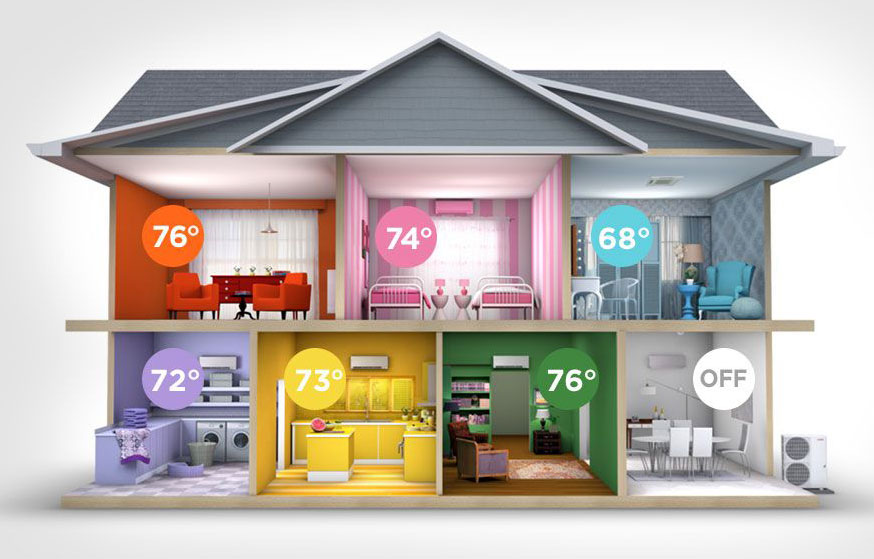Tankless Water Heaters: Are They Worth It?
Everyone is always trying to free themselves from the shackles of overspending, especially during the winter. We take a look at our bills and we decide what we can do to cut back for the ultimate goal of saving money. There are many different ways to bring that monthly number down but sometimes it requires a big upfront cost. We are here to help you determine whether one of those options is worth it: a tankless water heater. We have compiled a pros and cons list for you to make the best decision for your budget.
Before we go into our pros and cons list it is important that we answer one question that may be on your mind: how does a tankless water heater work? As you might have guessed, a tankless water heater does not have a tank, thus, it does not store hot water. So when a user turns the hot water tap on, cold water travels through a pipe, entering into the tankless unit. The system’s gas burner or electric heat element, provides an almost instant and endless supply of hot water. Which bring us to our pros:
Pros
Pro 1: Instant Hot Water
Once the system flushes the cold water from the pipes you are brought a continuous stream of hot water almost instantly. Hot baths and back-to-back showers just got a lot more convenient.
Pro 2: Longer Life Span
The standard tank model, even a high-end option, will only last around 8-10 years. The tankless system will function for twice that long, around 20 years or more.
Pro 3: Save Energy for Lower Monthly Costs and Tax Breaks
Perhaps the best thing about tankless (besides the instant hot water) is the difference in energy use. A standard water tank even uses energy when no one is home due to the need to continuously reheat the water in the tank. Tankless fires up only when in use. Studies have shown that they are as much as 22% more efficient than a tank model, bringing your energy bill down, thus, homeowners can save hundreds of dollars each year.
Another consideration is that the energy efficiency of a tankless water heater, can sometimes qualify them for local energy rebates and federal tax credits. Contact your local HVAC specialist for details.
Pro 4: Space Saver
This is rather obvious to consider but it’s worth a mention because in smaller homes it is a real bonus. Tankless water heaters are installed right on the wall, the space they take up is negligible compared to their tanked counterparts.
Pro 5: Longer Warranties
While the warranty will vary from brand to brand and system to system, many offer protection for up to 15 years! That’s longer than the entire life expectancy of a tank system.
Pro 6: Never Run Out of Hot Water
This is the #1 pro on our list, tankless heaters do not rely on reserved water to meet the demand. With a standard tank unit, once the tank is empty you have to wait awhile for the heated water to replenish.
Pro 7: They’re Safer
There is no chance of a catastrophic leak and you don’t have to worry about bacteria forming, also because the air-supply and exhaust vents are sealed, CO can’t leak into the house from a back draft.
Pro 8: They Are Easy to Winterize
This is for all the snowbirds and landlords with vacant properties, no more draining the entire contents of your enormous water tank! With a compressor a tankless heater drains in seconds and then you simply unplug it.
All these benefits sound pretty incredible, right? They are! But in order to make an educated decision, there’s also a few downsides you should be made aware of.
Cons
Con #1: Inconsistent Temperatures
In most cases the inconsistency can be fixed with simple maintenance solutions. But if your family has heavy hot water usage, you should be aware that simultaneous usage can sometimes lead to inconsistency of hot water temperatures.
Con #2: High Upfront Cost
Coinciding with Pro #2, the high upfront cost comes from the long lifespan of these units. A standard tank model can cost anywhere from $600-$1,200, whereas a good tankless system can set you back $2,000-$4,500 installed.
Con #3: Limited Water Supply
Again, tankless struggles with multiple competing outlets. It is great if several people take showers consecutively because it will be able to keep up and continuously heat that source. However, if 2 people are showering, while also running the washing machine, all at the same time – it could pose an issue.
Con #4: Additional Maintenance May Be Required
In order to keep that 20-year warranty active, routine maintenance might be required. A simple flushing out of the system to avoid mineral buildup will probably suffice.
Con #6: The Payback May Take A Few Years
The payback on tankless systems is certainly not instantaneous like its hot water supply. Depending on your overall investment, your payback may take more than just a few years.
Whether your current water heater has failed, or you are simply unhappy with its performance, there are many things to consider before you make a purchase. If you are tired of running out of hot water, you will love the idea of the “on-demand” heating style of a tankless water heater. You will also find yourself enjoying the lower monthly energy bills. If you’re serious about taking those next steps, you can contact a professional to help you weigh your options and find the right hot water solution for your home needs and budget.








































